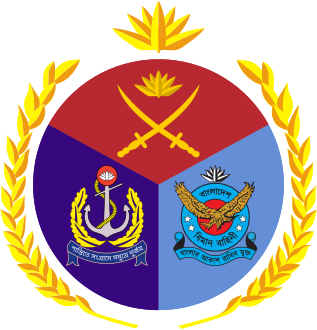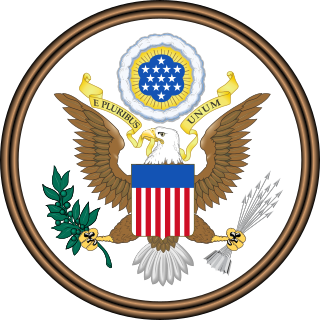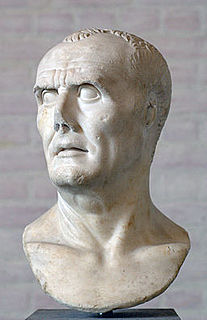 W
WThrough and post-Karabakh war period showed the importance of taking actions to improve the field of military for Azerbaijan. The principal target of the late government under Heydar Aliyev was to establish and strengthen the military infrastructure.
 W
WThe Cardwell Reforms were a series of reforms of the British Army undertaken by Secretary of State for War Edward Cardwell between 1868 and 1874 with the support of Liberal prime minister William Ewart Gladstone. Gladstone paid little attention to military affairs but he was keen on efficiency. In 1870, he pushed through Parliament major changes in Army organisation. Germany's stunning triumph over France in the Franco-Prussian War proved that the Prussian system of professional soldiers with up-to-date weapons was far superior to the traditional system of gentlemen-soldiers that Britain used.
 W
WThe Defence Reform Act 2014 is an Act of the Parliament of the United Kingdom. It has 51 sections and seven schedules, and is concerned with defence procurement and the UK Reserve Forces, particularly the Territorial Army.
 W
WForces Goal 2030 is a military modernization program of the Bangladesh Armed Forces which began in 2009 and revised in 2017, designed to the capabilities of the three services of the Bangladesh armed forces: the Army, the Navy and the Air Force. The primary focus of the modernization program is the reformation of the military organization, expansion of the forces, transformation of the indigenous defense sector to support research and manufacturing, and acquisition of modern military weapons. The requirement for modernization was realized in the aftermath of 2008 Bangladesh–Myanmar naval standoff later resulting in Bangladesh's favor. One of the primary objective of the modernization program is to develop a three-dimensional forces capable to conducting multi-platform warfare.
 W
WFortification Upgrades was a re-organization of military forces and strengthening of the defenses of Norway. The Norwegian army in this period became much better prepared for conflict with Sweden than in any previous period. It numbered 12,000 men in five regiments of infantry, 6 companies of cavalry, and an artillery division with 76 field pieces. An additional Norwegian regiment was serving in Denmark.
 W
WThe Goldwater–Nichols Department of Defense Reorganization Act of October 4, 1986 Pub.L. 99–433,, made the most sweeping changes to the United States Department of Defense since the department was established in the National Security Act of 1947 by reworking the command structure of the United States military. It increased the powers of the chairman of the Joint Chiefs of Staff and implemented some of the suggestions from the Packard Commission, commissioned by President Reagan in 1985. Among other changes, Goldwater–Nichols streamlined the military chain of command, which now runs from the president through the secretary of defense directly to combatant commanders, bypassing the service chiefs. The service chiefs were assigned to an advisory role to the president and the secretary of defense, as well as given the responsibility for training and equipping personnel for the unified combatant commands.
 W
WThe Haldane Reforms were a series of far-ranging reforms of the British Army made from 1906 to 1912, and named after the Secretary of State for War, Richard Burdon Haldane. They were the first major reforms since the "Childers Reforms" of the early 1880s, and were made in the light of lessons newly learned in the Second Boer War.
 W
WKhosrow I, traditionally known by his epithet of Anushirvan, was the Sasanian King of Kings of Iran from 531 to 579. He was the son and successor of Kavad I.
 W
WThe Byzantine army of the Komnenian era or Komnenian army was the force established by Byzantine emperor Alexios I Komnenos during the late 11th/early 12th century, and perfected by his successors John II Komnenos and Manuel I Komnenos during the 12th century. From necessity, following extensive territorial loss and a near disastrous defeat by the Normans of southern Italy at Dyrrachion in 1081, Alexios constructed a new army from the ground up. This new army was significantly different from previous forms of the Byzantine army, especially in the methods used for the recruitment and maintenance of soldiers. The army was characterised by an increased reliance on the military capabilities of the immediate imperial household, the relatives of the ruling dynasty and the provincial Byzantine aristocracy. Another distinctive element of the new army was an expansion of the employment of foreign mercenary troops and their organisation into more permanent units. However, continuity in equipment, unit organisation, tactics and strategy from earlier times is evident. The Komnenian army was instrumental in creating the territorial integrity and stability that allowed the Komnenian restoration of the Byzantine Empire. It was deployed in the Balkans, Italy, Hungary, Russia, Anatolia, Syria, the Holy Land and Egypt.
 W
WThe Marian reforms were reforms of the ancient Roman army implemented in 107 BC by the statesman Gaius Marius, for whom they were later named. The reforms originated as a reaction to the military and logistical stagnation of the Roman Republic in the late 2nd century BC. Centuries of military campaigning throughout the Mediterranean and increasing invasions and uprisings across Roman territory had stretched the human and physical resources of the Roman army. The 'maniple' militia used since the Samnite Wars (343-290BC) emerged as inadequate for the demands of the expanding Roman territory.
 W
WThe National Security Act of 1947 was a law enacting major restructuring of the United States government's military and intelligence agencies following World War II. The majority of the provisions of the Act took effect on September 18, 1947, the day after the Senate confirmed James Forrestal as the first Secretary of Defense.
 W
WThe reorganization plan of the United States Army is a current modernization and reorganization plan of the United States Army that was implemented under the direction of Brigade Modernization Command. This effort formally began in 2006 when General Peter Schoomaker, was given the support to move the Army from its Cold War divisional orientation to a full-spectrum capability with fully manned, equipped and trained brigades; this effort was completed by the end of 2016. It has been the most comprehensive reorganization since World War II and included modular combat brigades, support brigades, and command headquarters, as well as rebalancing the active and reserve components. The plan was first proposed by the Army's 34th Chief of Staff, Eric Shinseki, in 1999, but was bitterly opposed internally by the Army. By 2020, the Army's 40th Chief of Staff was calling for transformational change, rather than incremental change by the Army.
 W
WSignificant reforms of the Russian Armed Forces were announced in October 2008 under Defence Minister Anatoliy Serdyukov, and major structural reorganisation began in early 2009. The stated aims of the reform are to reorganize the structure and the chain of command in the Russian army, and to reduce it in size.
 W
WThe military budget of Russia is the portion of the overall budget of Russia that is allocated for the funding of the Russian Armed Forces. This military budget finances employee salaries and training costs, the maintenance of equipment and facilities, support of new or ongoing operations, and development and procurement of new weapons, equipment, and vehicles.
The Soldiers for the Truth Foundation is a 501(c)(3) public charity organization in the United States dedicated to military reform. Its stated mission is to inform the public, Congress, and the media on issues related to the training, readiness, equipment and leadership of US armed forces. The Foundation is registered as a non-profit organization under section 501(c)(3) of the Internal Revenue Code. Notable issues in which the foundation has been involved include campaigning for better body armor for troops serving in Iraq and contributing to coverage of the abuse of prisoners at Abu Ghraib.
 W
WThe Territorial and Reserve Forces Act 1907 was an Act of the Parliament of the United Kingdom that reformed the auxiliary forces of the British Army by transferring existing Volunteer and Yeomanry units into a new Territorial Force (TF); and disbanding the Militia to form a new Special Reserve of the Regular Army. This reorganisation formed a major part of the Haldane Reforms, named after the creator of the Act, Richard Haldane.